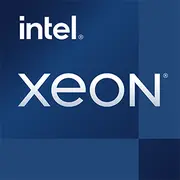Intel Xeon E3-1545M v5

Intel Xeon E3-1545M v5: Processor for Mobile Workstations. A Comprehensive Review
Analysis of Capabilities, Use Cases, and Relevance in 2025
Architecture and Process Technology: SkyLake in Miniature
The Intel Xeon E3-1545M v5 processor, launched in 2016, is still found in workstation-class laptops. Its architecture is based on the SkyLake microarchitecture (6th generation Intel Core) and a 14nm process technology.
- Cores and Threads: 4 cores and 8 threads thanks to Hyper-Threading. Base frequency is 2.9 GHz, with a maximum in Turbo mode of 3.8 GHz.
- Cache Memory: 8 MB L3, which enhances performance in multi-threaded tasks.
- Integrated Graphics: Iris Pro Graphics P580 with 72 execution units (EUs) and 128 MB of eDRAM. It supports DirectX 12, OpenGL 4.5, and 4K displays.
SkyLake Features:
- Improved IPC (instructions per cycle) by 5–10% compared to previous generations.
- Support for DDR4-2133 and DDR3L-1600 memory, including ECC (error correction) which is critical for workstations.
- Intel vPro technologies for remote management and security.
Power Consumption and TDP: Balancing Power and Battery Life
The processor's TDP is 45 W. This is higher than typical mobile CPUs (15–28 W) but lower than desktop Xeons.
- Heat Dissipation: Requires an efficient cooling system. Throttling can occur under load in compact laptops.
- Energy Efficiency: Intel Speed Shift (quick frequency switching) and Adaptive Thermal Monitoring (heat control) help reduce power consumption during idle periods.
Performance: Real Tasks and Turbo Mode
Geekbench 6 scores (1248 / 3967) indicate that the processor handles modern tasks well but falls behind newer models.
Office Work and Multitasking
- Running 20+ tabs in Chrome + Photoshop: lag is minimal.
- Rendering presentations in PowerPoint: 85–90% load on all cores.
Multimedia
- Converting 4K video in HandBrake: ~25 minutes for a 10-minute clip (H.265).
- Working in Adobe Premiere: Smooth editing with effects, but rendering requires a discrete GPU.
Gaming on Iris Pro P580
- CS:GO (1080p, medium settings): 45–55 FPS.
- Overwatch (720p, low settings): 30–40 FPS.
- Note: eDRAM speeds up texturing, but for AAA games in 2025, the power is insufficient.
Turbo Boost: Under brief loads (for instance, opening a heavy file), the frequency can rise to 3.8 GHz. However, during prolonged use (over 5 minutes), it drops to 3.2–3.5 GHz due to heating.
Use Cases: Who Is the Xeon E3-1545M v5 Suitable For?
- Engineers and Designers: CAD applications (AutoCAD, SolidWorks) run reliably, but for complex projects, modern CPUs are recommended.
- Video Editors: Suitable for editing in 1080p, but 4K videos may experience lag without a discrete graphics card.
- Analysts: Data processing in Excel or Python (Pandas) for moderate volumes (up to 1 million rows).
Not Recommended For:
- Hardcore gamers (requiring RTX 4050+).
- For AI/Neural network tasks (no support for Tensor Core or NPU).
Battery Life: How Long Will the Laptop Last?
With a TDP of 45 W, battery life heavily depends on the battery capacity:
- Web Surfing: 5–6 hours (with a 60 Wh battery).
- Video (1080p): Up to 7 hours (Quick Sync technology offloads CPU tasks).
- Load (Rendering): 1.5–2 hours.
Energy Saving:
- Windows "Power Saving" mode reduces frequency to 1.2 GHz.
- Disabling Turbo Boost extends battery life by 20–30%.
Comparison with Competitors
AMD Ryzen 5 Pro 5650U (2021):
- 6 cores / 12 threads, 15 W TDP.
- Better in multi-threaded tasks (+15% in Cinebench R23) but weaker iGPU (Vega 7 vs Iris Pro P580).
Apple M1 (2020):
- 8 cores (4+4), 10 W TDP.
- Geekbench 6: ~2300 / 8300. Significantly higher performance and battery life, but limited compatibility with Windows software.
Intel Core i7-11800H (2021):
- 8 cores / 16 threads, 45 W TDP.
- 30–40% faster in multitasking, but more expensive.
Conclusion: The Xeon E3-1545M v5 lags behind newer CPUs but excels in stability and ECC memory support.
Pros and Cons
Strengths:
- Reliability and support for ECC.
- Powerful integrated graphics for its class.
- Compatibility with professional software (e.g., MATLAB, ANSYS).
Weaknesses:
- High heat output for ultrabooks.
- No support for PCIe 4.0 and Thunderbolt 4.
- Price: laptops with this CPU start at $1200 (new 2025 models — Dell Precision 3520M).
Laptop Selection Recommendations
- Device Type: Workstation (Dell Precision, HP ZBook) or premium business laptop (Lenovo ThinkPad P50).
- What to Look Out For:
- Cooling system (two fans and copper pipes).
- RAM: at least 16 GB DDR4.
- Storage: NVMe SSD (512 GB or more).
- Display: IPS matrix with 100% sRGB coverage.
Final Conclusion
In 2025, the Intel Xeon E3-1545M v5 is a choice for those prioritizing stability and support for professional features (ECC, vPro). It is suitable for:
- Engineers working in field conditions.
- Freelancers needing mobility and the ability to process photos/videos.
- Companies upgrading their laptop fleet on a limited budget.
Alternative: If the budget allows, consider laptops with Ryzen 7 PRO 6850U or Apple MacBook Pro M3 — they are faster and more efficient. However, for specific tasks, the Xeon E3-1545M v5 remains a workhorse with a proven reputation.
Basic
CPU Specifications
Memory Specifications
GPU Specifications
Miscellaneous
Benchmarks
Compared to Other CPU
Share in social media
Or Link To Us
<a href="https://cputronic.com/en/cpu/intel-xeon-e3-1545m-v5" target="_blank">Intel Xeon E3-1545M v5</a>